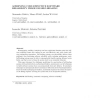Free Online Productivity Tools
i2Speak
i2Symbol
i2OCR
iTex2Img
iWeb2Print
iWeb2Shot
i2Type
iPdf2Split
iPdf2Merge
i2Bopomofo
i2Arabic
i2Style
i2Image
i2PDF
iLatex2Rtf
Sci2ools
CAI
2010
Springer
2010
Springer
Achieving Cost-Effective Software Reliability Through Self-Healing
Heterogeneity, mobility, complexity and new application domains raise new software reliability issues that cannot be met cost-effectively only with classic software engineering approaches. Self-healing systems can successfully address these problems, thus increasing software reliability while reducing maintenance costs. Self-healing systems must be able to automatically identify runtime failures, locate faults, and find a way to bring the system back to an acceptable behavior. This paper discusses the challenges underlying the construction of self-healing systems with particular focus on functional failures, and presents a set of techniques to build software systems that can automatically heal such failures. It introduces techniques to automatically derive assertions to effectively detect functional failures, locate the faults underlying the failures, and identify sequences of actions alternative to the failing sequence to bring the system back to an acceptable behavior.
Acceptable Behavior | CAI 2010 | Functional Failures | Information Technology | Self-healing Systems |
| Added | 28 Feb 2011 |
| Updated | 28 Feb 2011 |
| Type | Journal |
| Year | 2010 |
| Where | CAI |
| Authors | Alessandra Gorla, Mauro Pezzè, Jochen Wuttke, Leonardo Mariani, Fabrizio Pastore |
Comments (0)

